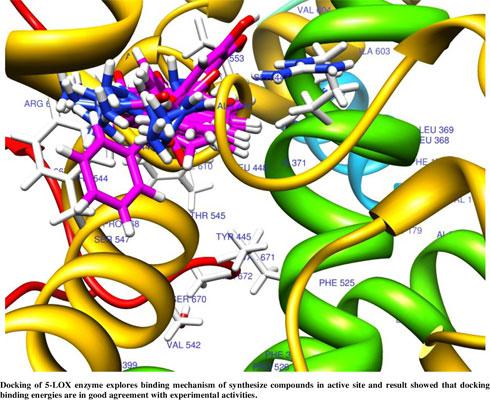Medicinal Chemistry ( IF 1.9 ) Pub Date : 2021-12-31 , DOI: 10.2174/1573406417666210216160941 Rooma Badar 1 , Uzma Ashiq 1 , Rifat Ara Jamal 1 , Parveen Akhter 1 , Mohammad Mahroof-Tahir 2 , Sana Gul 3 , Syed Tahir Ali 3

|
Background: A combination of biologically active ligand and metal in one molecule may increase the activity and reduce the toxicity.
Objectives: In this study, the synthesis and characterization of platinum(IV) complexes with bioactive hydrazide ligands are discussed.
Method: Elemental analysis, conductivity measurements, and spectroscopic studies were used to elucidate the structure of complexes.
Results: Our study suggests that hydrazide ligands coordinate with Pt(IV) in a bidentate fashion. The platinum(IV) complexes have octahedral geometry with a metal to ligand ratio of 1:2. Hydrazide ligands were coordinated with central metal platinum(IV) by oxygen of carbonyl group and nitrogen of primary amine. Synthesized complexes exhibited variable DPPH radical scavenging and lipoxygenase inhibition activity. Furthermore, it is also found that Pt(IV)-hydrazide complexes are more potent superoxide and nitric oxide radical scavengers than their uncoordinated hydrazide ligands, while in the case of lipoxygenase enzyme inhibition, some of the free hydrazide ligands are more active than their respective Pt(IV) complexes. In silico docking technique explores molecular interactions of synthesized ligands in the active site of the lipoxygenase enzyme. Predicted docking energies are in good agreement with experimental data suggesting that in silico studies might be useful for the discovery of therapeutic candidates.
Conclusion: Structure-function relationship demonstrates that the radical scavenging and enzyme inhibition activities of the Pt(IV) compounds are affected by the nature of the ligand, position of substituent, electronic and steric effects. However, electronic factors seem to play a more important role than other factors.
中文翻译:

铂 (IV)-酰肼复合物的体外合成、结构解析和抗氧化特性:建议作为有效脂氧合酶抑制剂的游离酰肼的分子模型
背景:生物活性配体和金属在一个分子中的组合可以增加活性并降低毒性。
目的:在本研究中,讨论了具有生物活性酰肼配体的铂 (IV) 配合物的合成和表征。
方法:使用元素分析、电导率测量和光谱研究来阐明配合物的结构。
结果:我们的研究表明,酰肼配体以双齿方式与 Pt(IV) 配位。铂 (IV) 配合物具有八面体几何形状,金属与配体的比例为 1:2。酰肼配体通过羰基的氧和伯胺的氮与中心金属铂(IV)配位。合成的复合物表现出可变的 DPPH 自由基清除和脂肪氧化酶抑制活性。此外,还发现 Pt(IV)-酰肼复合物是比其未配位的酰肼配体更有效的超氧化物和一氧化氮自由基清除剂,而在脂氧化酶抑制的情况下,一些游离酰肼配体比它们各自的活性更高Pt(IV) 络合物。计算机对接技术探索合成配体在脂肪氧化酶活性位点的分子相互作用。
结论:结构-功能关系表明Pt(IV)化合物的自由基清除和酶抑制活性受配体性质、取代基位置、电子和空间效应的影响。然而,电子因素似乎比其他因素起着更重要的作用。











































 京公网安备 11010802027423号
京公网安备 11010802027423号